What is Radius? How Radius runs, background, features, and roadmap interpretation
What is Radius? How does Radius work? Radius bridges MEV capture and searcher revenue in a secure, user-centric environment, leveraging encryption to ensure fairness and transparency within the rollup ecosystem.
While the world is rapidly moving towards modularity and rollups show considerable scalability potential, building a sustainable rollup ecosystem remains challenging. This challenge stems from existing rollup designs and pain points faced by users. As the rollup ecosystem expands, addressing user pain points has become crucial, including ensuring transaction security, fast finality and a seamless interoperability experience. To solve these pain points, a new rollup ecosystem, Radius, was born. Radius is a new secure sorting solution powered by encryption technology that provides fast finality and seamless interoperability.
So, what is Radius? A comprehensive introduction to the Radius team background, Radius features, Radius discovery roadmap, etc., let’s take a look below!
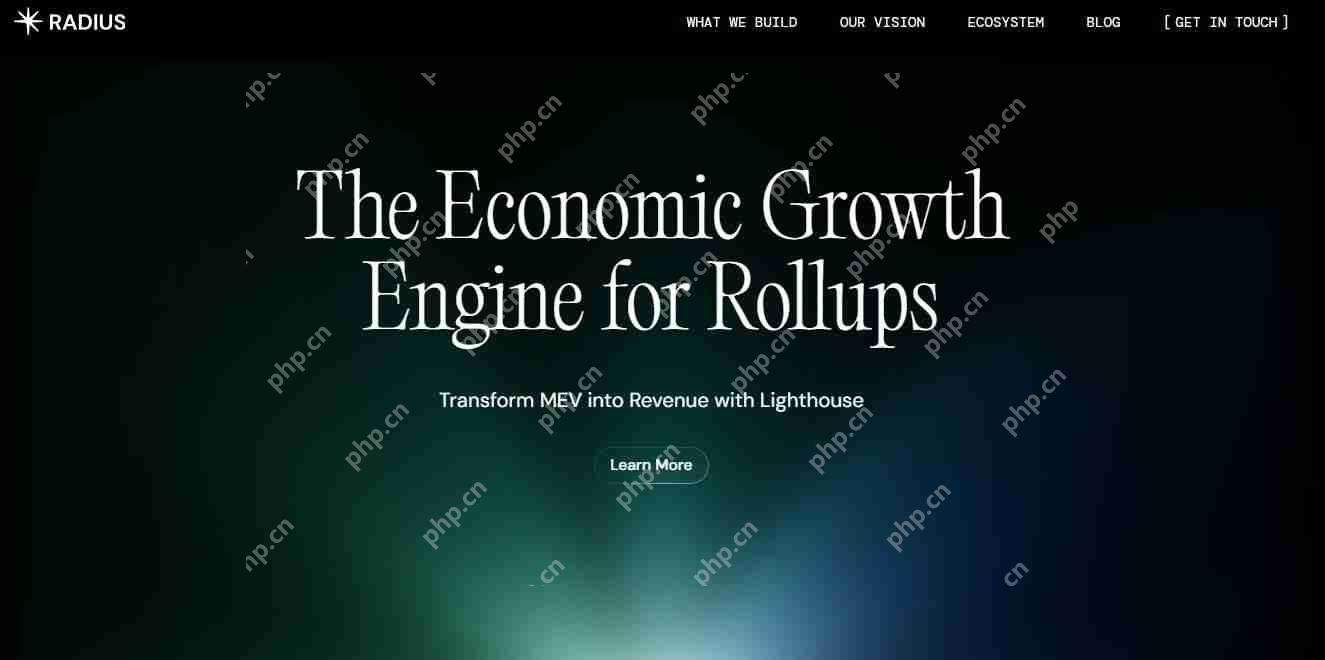
What is Radius?
Radius is a user-centric rollup economic growth engine that enables searchers to gain profits while protecting users’ security. Radius’s main goal is to capture MEVs (maximum extractable value) in a decentralized manner and connect them with searchers (users) to obtain sustainable profit opportunities. To avoid possible malicious MEV attacks during the transaction process, Radius uses a trustless sorting engine to encrypt MEV transactions from the memory pool, thus preventing the sorter from censoring, snatching, or pinching operations. Transactions remain encrypted until the sorter pre-confirms the transaction order and verify encrypted transactions through Zero Knowledge Proof (ZKP), fundamentally eliminating trust dependency on the sorter. This mechanism ensures that the sorter cannot decrypt transactions before issuing a pre-confirmation to the user.
Radius relies on two key components to ensure rollups are safe and efficient: Lighthouse and Secure Block Building (SBB). Lighthouse connects rollup with searchers to achieve sustainable MEV benefits, while SBB promotes fair and transparent block building.
What is Rollup?
Rollup is a Layer 2 design concept designed to improve the scalability, speed and cost efficiency of blockchain networks (especially Ethereum). When the user interacts with the rollup, the transaction is processed on the faster Layer 2 blockchain and sends the transaction data to the main chain Layer 1. This process can be completed at a lower cost and faster speed than the main chain, which significantly reduces network congestion and transaction fees while maintaining security and decentralization.
Rollup is mainly divided into two types: Optimistic Rollup defaults to assume that all transactions are valid and only verifies when disputes arise; Zero-Knowledge Rollup relies on cryptographic proof to verify the validity of all transactions.
Radius background
Founded in 2023 and headquartered in South Korea, Radius is a financial services provider. The team on the Radius project remained anonymous, showing only the pseudonym. As mentioned earlier, AJ is the founder of Radius. He is a blockchain visionary who deeply cultivates zero-knowledge proof and rollup technology. He actively advocates decentralized and user-centric blockchain solutions. Meanwhile, Tariz, Jayden and Jongbeen are co-founders. The team conducted two seed financing rounds in 2023 and 2025, raising over $8.7 million from well-known investment institutions such as Pantera Capital, LambdaClass, Hashed, Crypto.com and Nonce Classic.

Radius Features
- Cross-Rollup MEV: Radius cooperates with Avail to achieve synchronous atomic transactions across rollups, unlocking cross-rollup arbitrage and other revenue opportunities.
- Based on Sequencing: Provides new MEV earning opportunities by connecting ETH liquidity and rollup.
- Crypto Transactions: Radius uses a trustless sorting engine to encrypt transactions to protect users from harmful MEV attacks such as censorship, snatch or sandwich attacks.
- Zero Knowledge Proof (ZKPs): Verify crypto transactions, reduce the trust requirement for the sorter, while ensuring transaction privacy and security.
- Lighthouse Network: Lighthouse connects multiple rollups with searchers through permissionless auctions.
- Secure Block Builder (SBB): Radius encrypts transactions directly within the user's browser through SBB, in just one second, no additional software is required.
- Distributed Key Generation (DKG): Provides encryption keys with delay function.
- Punishment mechanism: Prevent transactions from being reordered in a single transaction sequence.
- Backrunning: Radius provides back-running function to improve rollup profitability.
How does Radius work?
Radius enables rollups to capture maximum extractable value (MEV) in a decentralized and user-protected way through two key components—Secure Block Builder (SBB) and Lighthouse.
Its working principle is as follows:
Lighthouse Network
Lighthouse is a decentralized network that enables searchers to connect to rollup opportunities during block production. Lighthouse enables rollups to leverage MEV strategies to improve market efficiency, such as arbitrage and liquidation. It supports a variety of MEV strategies, including CEX-DEX arbitrage, atomic arbitrage, liquidation, cross-rollup arbitrage, and Ethereum-rollup arbitrage. Through Lighthouse, these searchers can identify potential opportunities and create MEV transaction packages. The transaction package is submitted to Lighthouse for bidding, and the winning transaction package is executed by rollups and charged fees to establish a sustainable source of income beyond transaction fees.
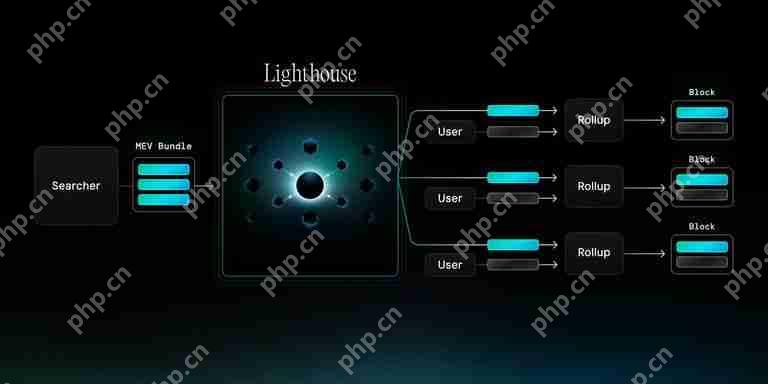
Secure Block Builder (SBB)
The Secure Block Builder (SBB) is an encryption component designed to protect users from harmful MEV attacks. SBB is customized and integrated by Radius for each rollup, ensuring transactions are encrypted within the user's browser in less than a second without any additional software installation. The process relies on an encryption technology called Practical Verified Delay Encryption (PVDE) , which eliminates the need for trust in external key generation, creating proofs for complex encryption operations. To ensure the continuous operation of SBB, Radius integrates several key components that work together to maintain network integrity and ensure transaction processing security:
- Seeder: Maintain and verify the IP address of the transaction sorter.
- Secure Remote Procedure Call (Secure RPC): Encrypt sensitive transaction data in a blockchain or rollup environment.
- Distributed Key Generation (DKG) service: Generates an aggregate encryption key through a collaborative process. Users use these keys to encrypt transactions, and then the transaction sorter decrypts the transactions.
- Liveness Service Manager contract: Responsible for block creation and transaction sorting, ensuring the availability of transaction sorters.
- Validation Service Manager contract: Transaction verification and reward allocation through multiple processes.
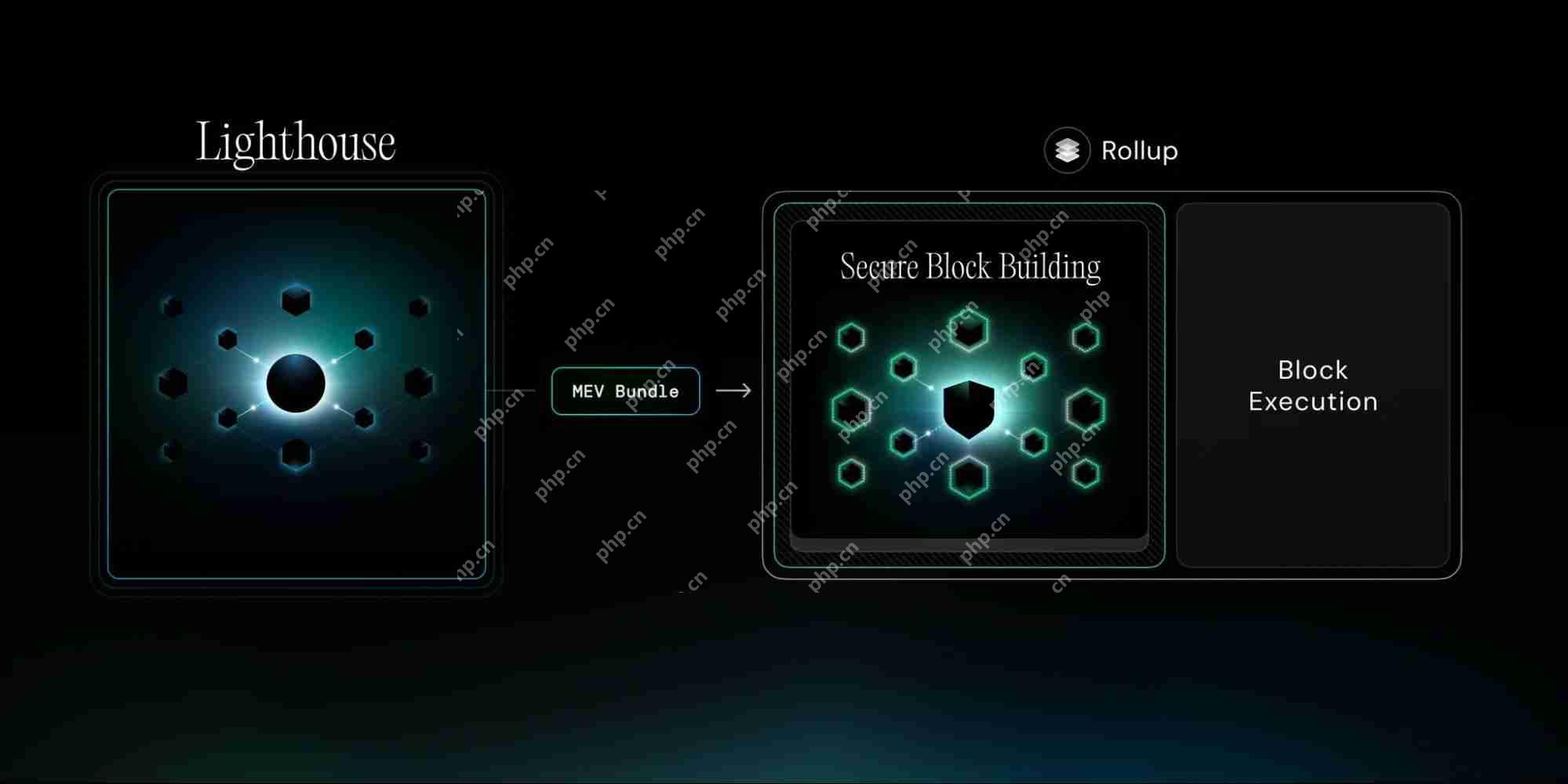
Radius AVS and NFFL
Among many rollup infrastructure innovations, AVS (Actively Validated Services) and NFFL (Nuffle Fast Finality Layer) are two key components that enhance decentralization and high-speed transaction settlement. Radius has implemented these features, providing developers with a safe and efficient rollup solution.
Radius AVS is a decentralized sorting solution that integrates directly into rollups to solve issues such as reviews and system failures while maintaining high performance. Unlike traditional security inspections that require regular monitoring, AVS adopts a continuous verification mechanism that does not affect the user experience or system operation. It prevents malicious behaviors such as kick-offs and ensures that the network remains active even if the sorter fails. Currently, Radius AVS is running on the test network and is promoting mainnet deployment.
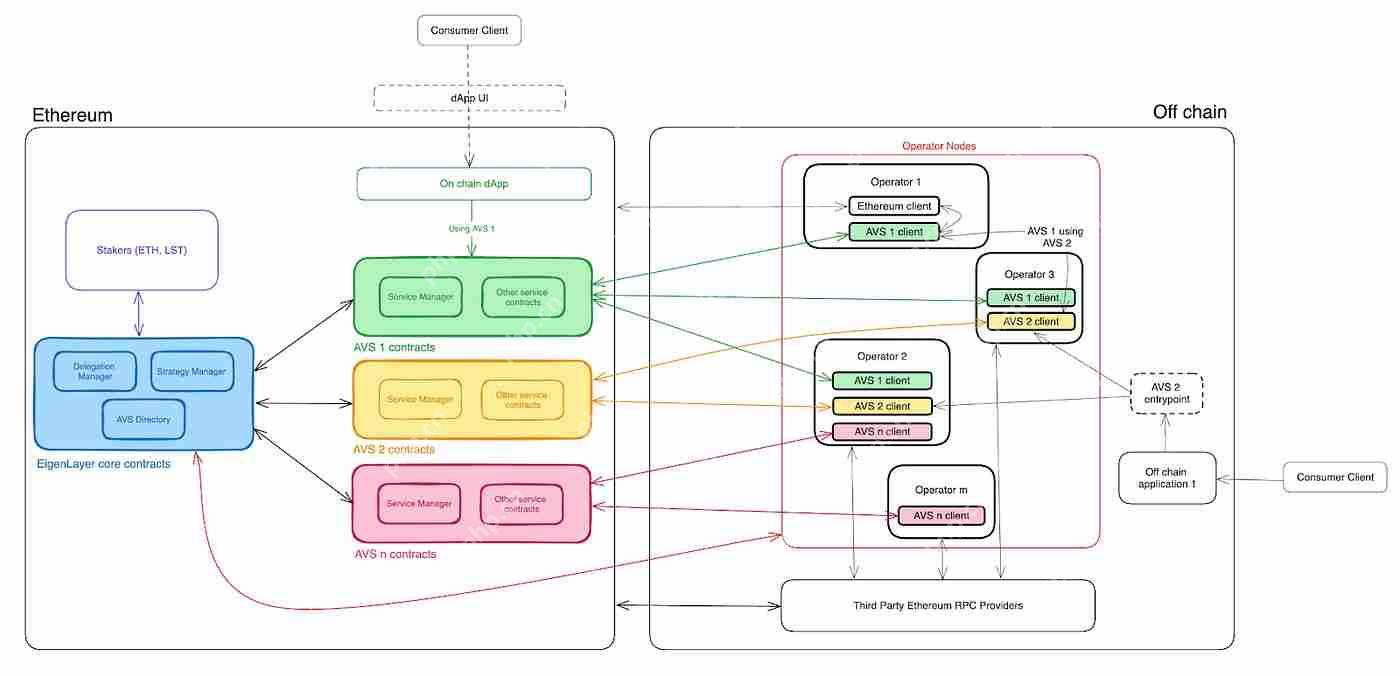
Source: HashKey Cloud
On the other hand, Radius NFFL acts as a fast settlement layer, improving rollup speed and security. The main function of Radius NFFL is to enable participating networks to quickly and securely access information from other networks. Currently, Radius utilizes NEAR and EigenLayer to provide interoperability capabilities. The combination of these two enables applications to securely verify cross-chain state in 2-3 seconds, which is orders of magnitude faster than traditional bridge settlement.
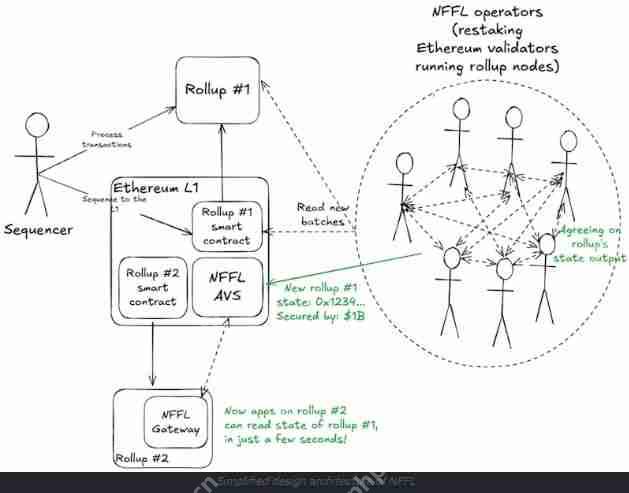
Source: @2077research from Hackernoon
Radius ecosystem
Radius has established partnerships with leading rollup platforms and infrastructure providers to support technology stacks such as OP Stack, Polygon CDK, Madara, Arbitrum, and ZK Stack, as well as rollups such as Swell, Fuse, Ternoa, LIFT and VESSEL. In addition, the following partners are included:
- Stake: OP Stack, Polygon CDK, Madara, Arbitrum, and ZK Stack.
- Rollup: Swell, Fuse, Ternoa, LIFT and VESSEL.
- Infrastructure: Avail, WitnessChain, Nuffel, Pragma, STARKNET, and RISE.
- Re-staking: Symbiotic and EngineLayer.
- RaaS: Caldera, AltLayer and KARNOT.
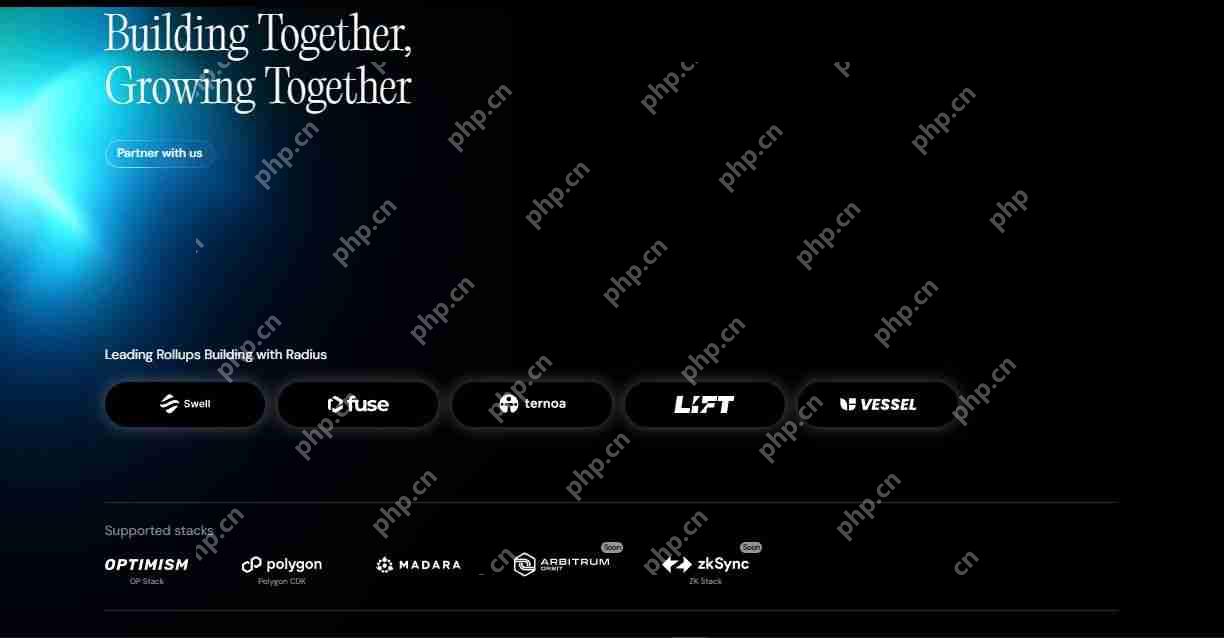
Radius Roadmap
Key milestones include:
1.SBB 2.0: Backrunning on a single rollup
SBB 2.0 allows searchers to submit backrunning transaction packages directly to rollup, enabling rollups and searchers to capture MEV opportunities, including CEX-DEX arbitrage.
- Q1 2025: Integration on rollup testnet
- Q2 2025: Integration on the rollup mainnet
2.Lighthouse 1.0: Extend to multiple rollups
Lighthouse 1.0 connects multiple rollups and searchers for efficient MEV capture. Rollup earns profit from bidding by executing the searcher's MEV transaction package.
- Q2 2025: Test network starts
- Q4 2025: Mainnet starts
3.Lighthouse 2.0: Extended to L1
Lighthouse 2.0 expands efficient MEV capture to L1 and L2, unlocking greater value and providing L1-L2 arbitrage opportunities for rollup, L1 validators and searchers.
- Q2 2026: Test network starts
- Q4 2026: Mainnet starts
in conclusion
Although blockchain is committed to building secure, scalable and decentralized networks, the mismatch between current system design and value extraction makes Ethereum rollups face challenges when adopting a user-oriented approach. As part of an ever-expanding modular ecosystem, Radius helps rollup solve these challenges by optimizing rollup efficiency, enabling users to trade safely and confidently, creating a strong, robust and sustainable rollup ecosystem.
The above is the detailed content of What is Radius? How Radius runs, background, features, and roadmap interpretation. For more information, please follow other related articles on the PHP Chinese website!

Hot AI Tools

Undresser.AI Undress
AI-powered app for creating realistic nude photos

AI Clothes Remover
Online AI tool for removing clothes from photos.

Undress AI Tool
Undress images for free

Clothoff.io
AI clothes remover

Video Face Swap
Swap faces in any video effortlessly with our completely free AI face swap tool!

Hot Article

Hot Tools

Notepad++7.3.1
Easy-to-use and free code editor

SublimeText3 Chinese version
Chinese version, very easy to use

Zend Studio 13.0.1
Powerful PHP integrated development environment

Dreamweaver CS6
Visual web development tools

SublimeText3 Mac version
God-level code editing software (SublimeText3)

Hot Topics
 1672
1672
 14
14
 1428
1428
 52
52
 1332
1332
 25
25
 1277
1277
 29
29
 1257
1257
 24
24
 2025 Huobi APKV10.50.0 Download Guide How to Download
May 12, 2025 pm 08:48 PM
2025 Huobi APKV10.50.0 Download Guide How to Download
May 12, 2025 pm 08:48 PM
Huobi APKV10.50.0 download guide: 1. Click the direct link in the article; 2. Select the correct download package; 3. Fill in the registration information; 4. Start the Huobi trading process.
 2025 Huobi APKV10.50.0 download address
May 12, 2025 pm 08:42 PM
2025 Huobi APKV10.50.0 download address
May 12, 2025 pm 08:42 PM
Huobi APKV10.50.0 download guide: 1. Click the direct link in the article; 2. Select the correct download package; 3. Fill in the registration information; 4. Start the Huobi trading process.
 How to fix HTTP image upload errors in WordPress (simple)
May 12, 2025 pm 09:03 PM
How to fix HTTP image upload errors in WordPress (simple)
May 12, 2025 pm 09:03 PM
Do you need to fix HTTP image upload errors in WordPress? This error can be particularly frustrating when you create content in WordPress. This usually happens when you upload images or other files to your CMS using the built-in WordPress media library. In this article, we will show you how to easily fix HTTP image upload errors in WordPress. What is the reason for HTTP errors during WordPress media uploading? When you try to upload files to Wo using WordPress media uploader
 How to set, get and delete WordPress cookies (like a professional)
May 12, 2025 pm 08:57 PM
How to set, get and delete WordPress cookies (like a professional)
May 12, 2025 pm 08:57 PM
Do you want to know how to use cookies on your WordPress website? Cookies are useful tools for storing temporary information in users’ browsers. You can use this information to enhance the user experience through personalization and behavioral targeting. In this ultimate guide, we will show you how to set, get, and delete WordPresscookies like a professional. Note: This is an advanced tutorial. It requires you to be proficient in HTML, CSS, WordPress websites and PHP. What are cookies? Cookies are created and stored when users visit websites.
 2025 Huobi APKV10.50.0 download website
May 12, 2025 pm 08:39 PM
2025 Huobi APKV10.50.0 download website
May 12, 2025 pm 08:39 PM
Huobi APKV10.50.0 download guide: 1. Click the direct link in the article; 2. Select the correct download package; 3. Fill in the registration information; 4. Start the Huobi trading process.
 Recommended websites for free viewing market software. What are the websites for free viewing market software?
May 13, 2025 pm 06:18 PM
Recommended websites for free viewing market software. What are the websites for free viewing market software?
May 13, 2025 pm 06:18 PM
The three recommended free market viewing software websites are: 1. OKX, 2. Binance, 3. Huobi. 1. OKX provides rich market data and user-friendly interface, supporting multiple languages and mobile applications. 2. Binance provides simple design and rich market data, supporting advanced charting tools and mobile applications. 3. Huobi is known for its comprehensive and accurate market data, providing intuitive interfaces and mobile applications.
 Top 10 digital currency app trading platforms recommended, top ten digital currency trading platforms rankings in 2025
May 13, 2025 pm 05:45 PM
Top 10 digital currency app trading platforms recommended, top ten digital currency trading platforms rankings in 2025
May 13, 2025 pm 05:45 PM
Recommended Top Ten Digital Currency Trading Platforms in 2025: 1. Binance, 2. OKX, 3. Huobi, 4. Coinbase, 5. Kraken, 6. Bitfinex, 7. Bittrex, 8. Poloniex, 9. KuCoin, 10. Gemini, these platforms are popular for their high transaction volume, rich trading pairs, user-friendly interfaces and strong security measures.
 binance official website address entrance Binance trading platform entrance link
May 13, 2025 pm 06:00 PM
binance official website address entrance Binance trading platform entrance link
May 13, 2025 pm 06:00 PM
The way to access the Binance official website is to directly enter the URL in the browser. To register a Binance account, you need to visit the official website, click "Register", fill in the information, verify the email address and complete the KYC. Transactions need to log in, enter the trading platform, select the trading pair, enter the quantity and confirm. Deposits and withdrawals require login, entry into the "Wallet", select currency, generate or enter the address and confirm. To ensure the security of the account, you need to enable 2FA, use a strong password, enable anti-phishing codes, and regularly view login records.



